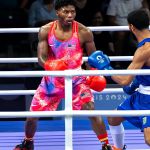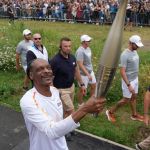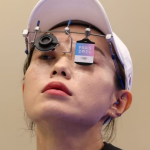
Kurt Angle's gold medal at the 1996 Olympics
“With a broken freakin’ neck”
August 12th, 2024
Abbas Jadidi in 1996 was 27 years old, an Iranian athlete competing in the 100kg category of freestyle wrestling at the Atlanta Olympics. He carried with him an aesthetic reminiscent of the 1980s. He wore a singlet with two very thin straps that covered a minimal portion of a torso developed and defined in every muscle. He had a scruffy beard, a thick mane of black hair, the same color as his mustache and chest hair. On July 31, he found himself at the World Congress Center, and at the end of the match for the gold medal, he approached the judges' table. The match had ended in a tie, and now the two judges, Etienne Martinetti and Vassilios Pagonis, together with the referee, would determine the winner of the match. Jadidi was so close to the table that he read his name on a piece of paper, so he started celebrating before the referee had officially declared him the winner. And this is the moment in the story when the plot twist occurs. The referee, Aduuch Baskhuu from Mongolia, misinterpreted the instructions from the table, initially declaring Jadidi the winner, only to correct himself and declare the winner to be the man who still holds the gold medal in the 100kg freestyle wrestling category at the 1996 Olympics: Kurt Angle.
If you were already aware of this story, that Kurt Angle won a gold medal at the Olympics, then you probably also know that he achieved this result "with a broken freakin’ neck". This phrase refers to the catchphrase used by Kurt Angle during his second life, as a WWE and TNA superstar, to emphasize that he won that gold medal despite a neck injury. Calling it an injury would even be an understatement. After falling on his head, Angle suffered two herniated discs, two fractured vertebrae, and the tearing of four muscles during the Trials preceding the Atlanta Olympics. Angle still managed to finish the Trials, which are the selections through which the United States elects athletes in various disciplines to participate in the Olympics. However, all the doctors he consulted after that injury gave him the same answer: surgery was necessary, followed by a long period of rest. “At the time, I was young and stupid, I was 26 years old. I didn’t care about my health, I just wanted to get back in the game,” Angle himself recounted in an interview with ESPN on the twentieth anniversary of his gold medal.
What pushed Angle to get back in the game was not only the idea that, as an American athlete, he could compete in an Olympics in the United States with legitimate medal ambitions. There were also personal matters. Angle had begun his preparation for the Olympic Games alongside his mentor, Dave Schultz, at the Pennsylvanian Foxcatcher Club, a facility created and funded by billionaire John Eleuthère du Pont. In January 1996, Schultz was murdered by du Pont himself, and Angle, unlike some of his teammates, immediately decided to leave the facility. Invited by Schultz’s wife, Nancy, Angle became the first member of the Dave Schultz Wrestling Club, the wrestling school founded in his honor. For Angle, competing in the Olympics was the only way to keep Schultz’s memory alive. And for this reason, he decided to follow the advice of the one doctor who told him surgery was not necessary.
“A doctor will travel with you. He will inject you with twelve doses of novocaine before each match. You won’t be able to train much, you won’t feel anything while you’re fighting, but an hour after each match, you’ll feel excruciating pain.” These are the words Kurt Angle used in Joe Rogan’s podcast to reveal the dark side of his gold medal. Those twelve injections before each match, along with his talent, are the reason why, on July 31, 1996, he stood on the top step of the Olympic podium with a gold medal around his neck and emotion on his face. But those same twelve injections before each match represent the first step in a life that has since been plagued by problems. Since that day, Angle has suffered four more neck injuries in WWE, and as a result, he no longer has feeling in the pinkies of both hands, has lost strength in his arms due to atrophy, and none of the five surgeries he has undergone has provided long-term benefits. In November, he announced that he planned to undergo a sixth surgery in early 2024, the installation of artificial discs that should help him regain strength in his hands and put an end to the problems of that broken freakin’ neck.




















